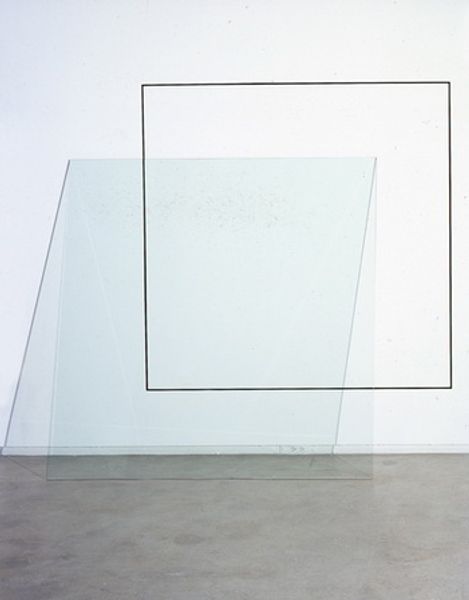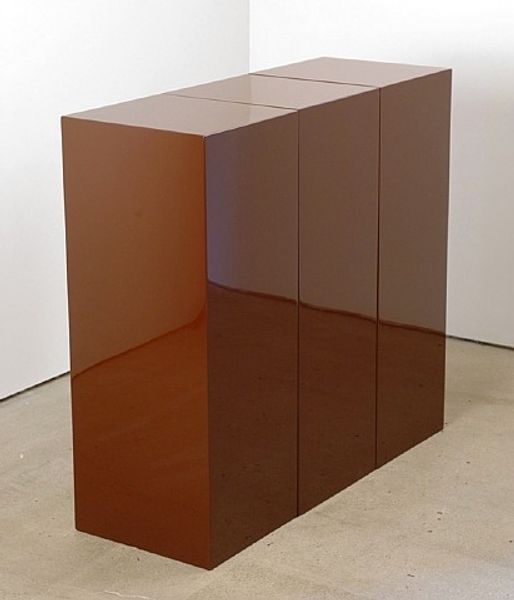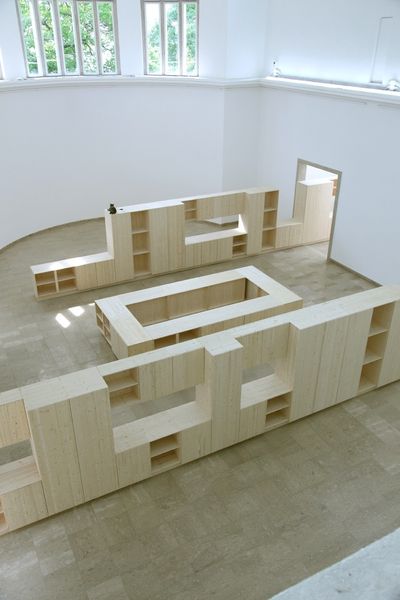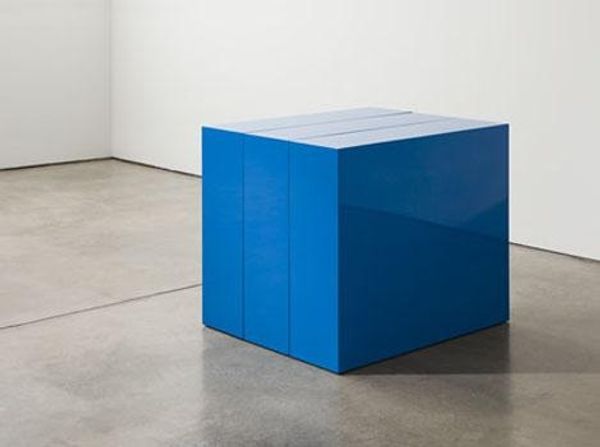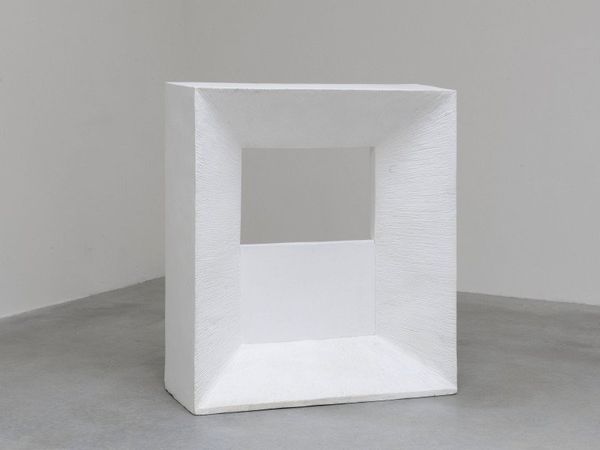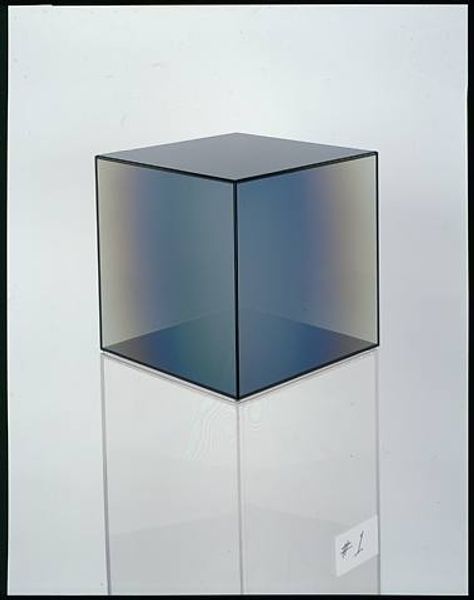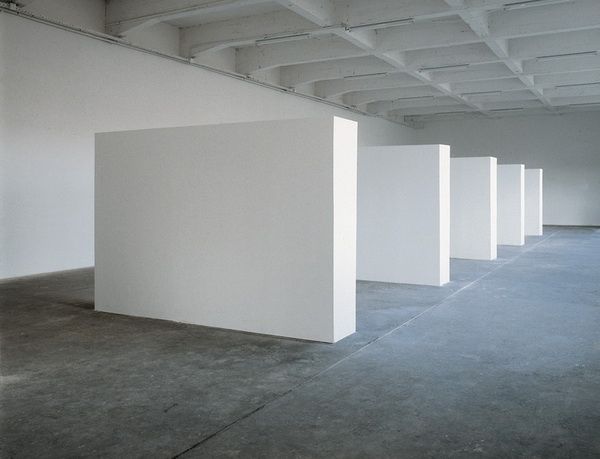
sculpture, installation-art
#
conceptual-art
#
minimalism
#
geometric
#
sculpture
#
installation-art
Copyright: Robert Morris,Fair Use
Robert Morris made these mirrored cubes sometime in his career, and they're here at the Tate Modern. The process seems simple - mirrored surfaces fixed onto geometric shapes, but simplicity can be deceptive. These cubes reflect everything around them, fragmenting and multiplying our view. The room becomes part of the sculpture, and we become part of the room. It’s a dance between the object and its surroundings, a constant flux of images. Look closely at the edges, where the mirrored surfaces meet. There’s a slight imperfection, a wavering line that reminds us of the handmade. These imperfections are so important, they bring a sense of reality into what might otherwise be too slick or seamless. Morris was part of a group of artists who were thinking about phenomenology, the idea that our experience shapes our understanding of the world. I think Dan Graham, who also worked with mirrored surfaces in architectural settings, was someone else thinking along similar lines. Ultimately, these cubes are about how we perceive space, how we see ourselves within it, and how art can mess with our expectations.
Comments
No comments
Be the first to comment and join the conversation on the ultimate creative platform.

